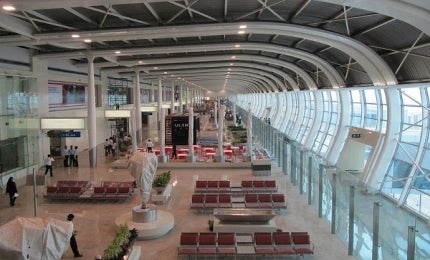
One of the biggest airports in Pakistan, Jinnah International Airport is located 14km east of Karachi city, the capital of Sindh province. The airport has an area of over 1,150ha and was previously known as Quaid-e-Azam International Airport. It was renamed after Muhammad Ali Jinnah, the founder of Pakistan and its first governor general. Pakistan Civil Aviation Authority (CAA) operates the airport.
Four aircraft crashed at the airport between 1953 and 2010 while taking off, resulting in 34 causalities. In 1986, a Boeing 747-121 aircraft of Pan America World Airways was hijacked by Palestinian gunmen, who killed 20 passengers in the incident.
In June, the airport was attacked by armed terrorists. More than 36 people, including ten terrorists, died in the incident and roughly 18 people were injured.
History of the airport
The first passenger terminal complex at the Jinnah International Airport was opened in 1992. It was constructed with an investment of $100m provided by the Pakistan Ministry of Defence. The terminal was constructed under the guidance and supervision of Bechtel International.
The architectural planning and design for the terminal was provided by Airconsult, in association with National Engineering Services Pakistan (NESPAK). The general construction contract was awarded to Sogea Construction.
Terminal features
The airport has a seven-level main passenger terminal with a total floor space of 115,000m² and capacity to handle up to 40,000 passengers a day. The terminal includes domestic and international concourses linked through corridors. The two concourses are known as Jinnah East and West satellite concourses, and they each have eight passenger-loading bridges. The eastern concourse handles international operations, while the western concourse hosts domestic and some international operations.
The terminal has 86 check-in desks, 12 air bridges and 12 gates. The head office of CAA is also located at the terminal. The West satellite concourse includes round-the-clock booking offices and ticketing auto-kiosks for Pakistan International Airlines (PIA). The concourses feature departure lounges, shopping complexes and snack shops.
Multan International Airport is located at Multan in Punjab, Pakistan.
The airport also has two more terminals, which are dedicated to handle Hajj operations and commercial offices. The passenger facilities at the terminals include high-speed escalators, transit lounges, restaurants, duty-free shops, CIP lounges, telephone booths, free internet for passengers and prayer area. A city information counter, immigration counters, ATMs, baby changing rooms, a luggage storage and wrapping facility, as well as hotel booking facilities are also featured.
Runways
The Jinnah International Airport has two 46m-wide runways; 25R/07L and 25L/07R, which are 3,200m and 3,400m long respectively. Both are paved with concrete and comply with instrument landing system (ILS) category 1 standards.
Taxiways and aprons
The airport has 12 taxiways, and apron/parking area spread over 266,000m² with 42 parking stands, including 12 with contact gates connecting the parking stands directly to the terminal building. The domestic and International terminals each have six parking stands. The airport also has 30 remote parking bays.
Ground transportation and parking
Bus and minibus routes run from the centre of Karachi to the airport. A wide variety of shuttles, private taxis, limousines and car rental facilities are also available at the airport. Car rental company Avis runs has an office at the terminal.






